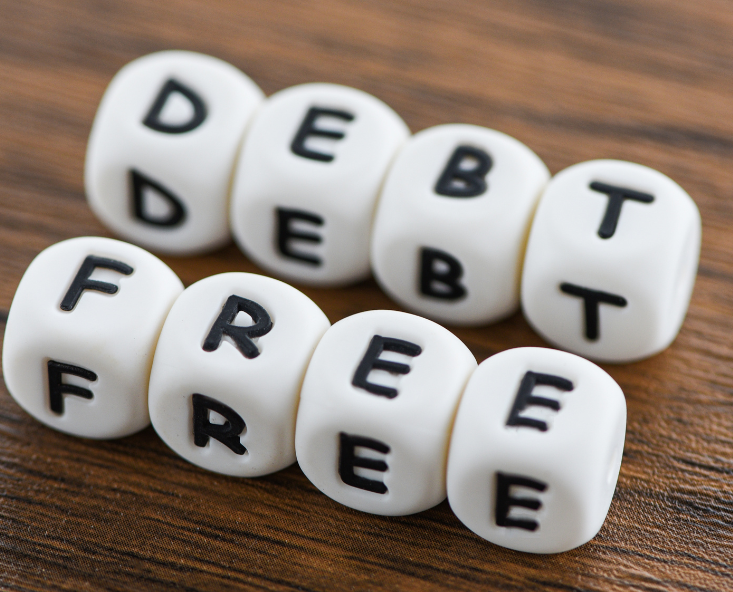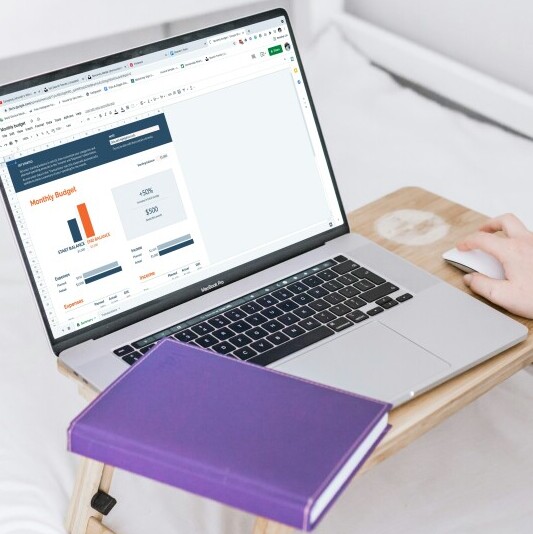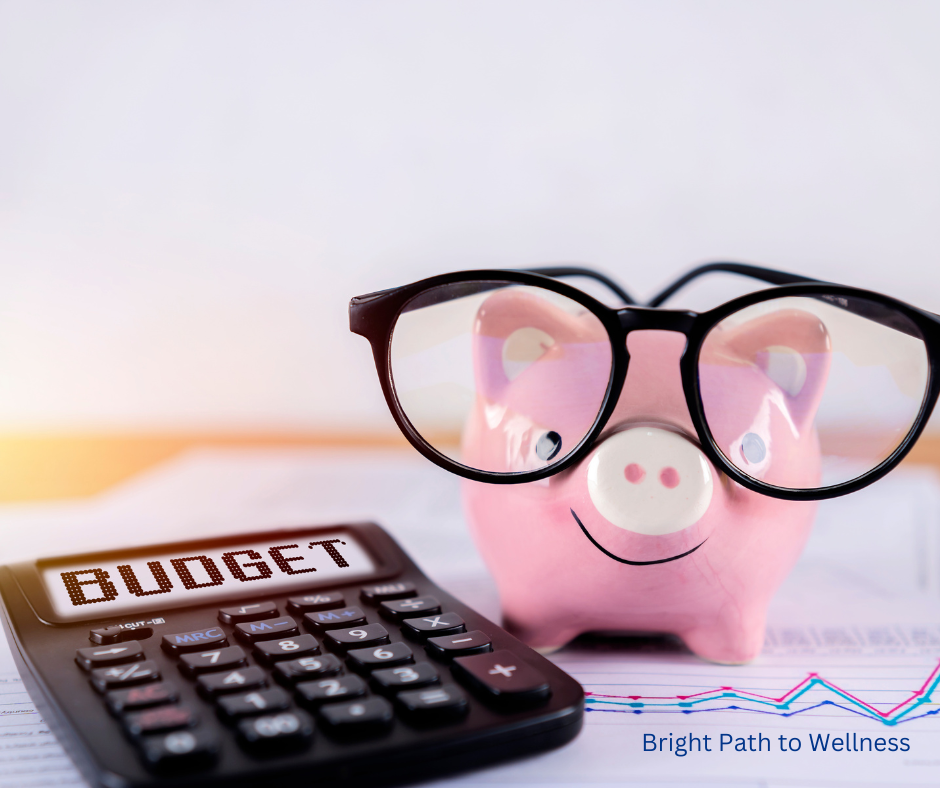Budgeting, let’s be honest, often feels like one more chore on our endless to-do lists — something we know we should do but quietly resent. I used to avoid it like my children dodge vegetables at dinner time.
Research1 confirms what I’ve experienced personally: automated financial tools reduce anxiety and the mental load associated with financial management. When numbers organize themselves while we sleep, something shifts in our relationship with money. The constant “I should be better at this” soundtrack finally fades away.
These digital tools are lifelines for those of us juggling work deadlines, kids’ schedules, and the elusive quest for five minutes of solitude. The limited hours in our day connect us with a universal truth: we need systems that work for us, not against us.
By surrendering the spreadsheets and manual tracking to technology, we’re invited to confront our relationship with money in a fundamentally different way: more intuitive, more honest, and surprisingly, more peaceful. Like finding unexpected stillness in a chaotic day, financial automation creates space, not just in our schedules but also in our minds.
How Financial Organization Reduces Stress and Improve Well-being

Money stress isn’t just about dollars and cents. It’s about the cognitive load we carry. On average, it takes 23 minutes and 15 seconds to regain concentration on a task after an interruption2. Financial worries are perhaps our most persistent internal interruption, constantly “pinging” our awareness and causing real mental fatigue.
I asked my financially savvy friends to send me their best recommendations to remedy the feeling of being constantly underwater with money management. Here’s what changed everything for me and might for you, too.
Free Budgeting Apps in 2025 That Work
Let’s start with options that won’t add to your financial stress by costing money:
- PocketGuard – For those new to budgeting or wanting a straightforward approach. Offers beautiful, easy-to-understand graphs that break down your spending habits, making it easier to spot areas where you might trim unnecessary expenses.
- Honeydue – Designed specifically for couples, this app helped end our household’s “Did you see that charge?” conversations. Financial transparency without extra work.
- Excel/Google Sheets Templates – Sometimes simplicity wins. My husband prefers our shared Google Sheets budget because it’s customizable to our family’s unique categories. Many excellent templates are available online for free.
- Your Bank’s Built-in Tools – Many banks now offer surprisingly robust budgeting features within their apps. I discovered my bank had spending analysis tools I hadn’t noticed for years!
Manual tracking feels like treading water all day with one arm behind your back. Automation frees you from that struggle, letting you enjoy the swim rather than survive it.
Paid Budgeting Apps Worth the Investment
For those ready to invest a small amount for additional features:
- You Need A Budget (YNAB) – YNAB’s philosophy of “giving every dollar a job” transformed how you view money. Rather than just tracking past spending, it helps with forward planning.
- EveryDollar Plus – If you follow his baby steps method for debt payoff, the integration makes implementation seamless.
Zero-Based Budgeting Explained: Save More with a Purpose-Driven Budget

Zero-based budgeting sounds intense, but it’s basically like telling every dollar it has a job to do. You start not with last month’s leftovers but with a blank slate each month. This method encourages you to decide your priorities, creating an empowered vibe in your financial life.
Why bother with this approach?
- Users practicing zero-based budgeting save more than traditional methods3.
- It creates a stronger sense of ownership over your finances.
- You’ll find yourself making more intentional spending decisions.
- Every dollar aligns with your goals, giving real clarity.
Apps like EveryDollar and YNAB are built with zero-based budgeting in mind. These platforms give you the framework to know exactly where each dollar goes, turning on a lightbulb in your financial fog.
Budgeting for Families: How to Teach Kids About Money While Staying Organized
When I found myself explaining dollars and cents to my wide-eyed six-year-old, I realized financial education starts early. This tool helps parents and children:
- The Barefoot Investor for Families by Scott Pape – This practical guide outlines ten essential money milestones children should master before leaving home, all taught through weekly 20-minute family “money meals.” Pape provides age-appropriate financial lessons, from setting up fee-free bank accounts to learning the value of hard work, designed to build financial confidence.
Use Visual Budgeting Tools to Make Smarter Financial Decisions
Numbers are cool, but let’s be honest, they don’t always tell the whole story in a way that’s easy to grasp. That’s where visual tools come in, transforming data into something our eyes and brains can groove with.
Research4 shows we make more budget-aligned decisions when visuals lead the way. That’s right. Having a visual guide can steer us toward better financial choices.
Look for apps that excel in visualization:
- Charts that show spending patterns over time.
- Color-coded categories that instantly communicate priorities.
- Progress bars toward savings goals.
- Forecasting graphs that show the impact of current habits on future goals.
Visual tools make the numbers prettier and empower you to spot potential mistakes before they happen and adjust your course wisely.
How to Keep Your Data Safe When Using Budgeting Apps
In the digital age, budgeting apps are a lifesaver but also come with security challenges. When choosing a budgeting app, look for these security features:
- OAuth 2.0 protocol – This works like the strongest lock for your financial data, ensuring the app doesn’t store your login credentials.
- AI-powered anomaly detection – Apps with machine learning can spot unusual activity in your spending patterns, catching potential fraud sooner5.
- End-to-end encryption – Ensures your data remains protected during transmission.
- Regular security audits – This shows the company takes security seriously.
Remember, keeping your financial information safe should always be a top priority, no matter how captivating the extra features are.
Build a Complete Financial Wellness System Beyond Budgeting Apps

Apps alone won’t solve financial stress. Like any wellness practice, financial health requires holistic approaches:
- Automate the non-negotiables – Set up automatic transfers for savings and bills. What happens automatically doesn’t require decision-making energy.
- Apply the Pomodoro technique to finances – Set a timer for 25 minutes once a week to review your budget. Small, consistent attention prevents overwhelming backlogs.
- Create money dates – Whether with yourself or a partner, schedule regular time to check in with your financial goals. I’ve found that pairing this with something pleasant (good coffee, favorite music) reduces resistance.
Best Finance Books to Deepen Your Money Mindset
For those moments when the kids are finally asleep, and you can steal a few minutes to read:
- “Your Money or Your Life” by Vicki Robin and Joe Dominguez – This transformed my relationship with money by connecting financial decisions to life energy and values. It’s less about tactics and more about mindset.
- “I Will Teach You to Be Rich” by Ramit Sethi – Despite the clickbait-y title, this offers practical automation strategies perfectly suited for busy professionals who want to set things up correctly once.
- “The Psychology of Money” by Morgan Housel – For understanding financial decisions’ emotional and behavioral aspects. Short chapters make it perfect for busy parents to digest in small moments.
Start Budgeting Today and Find Financial Peace of Mind
It is not easy to confront our financial habits. Many people give up along the way. But those who persist create powerful systems and, in addition, can win a wonderful prize: peace of mind that extends far beyond bank balances.
Remember that perfect financial management isn’t the goal — reduced financial stress and aligned priorities are. Choose one tool from this list that speaks to your situation, and start small. Like meditation or exercise, consistency matters more than perfection.
What financial tool will you try this week? Sometimes, the smallest ping — the notification that you stayed within budget this month — can be the sweetest sound.
About the Author
Carla Picolli is a psychologist, author, mother of two, and financial wellness advocate. With a mental health and wellness background, she bridges the gap between emotional well-being and financial health. While not a finance expert, Carla’s professional experience gives her unique insight into how our relationship with money affects our overall happiness, helping busy individuals build sustainable mental and financial wellness habits.
Our website contains affiliate links. This means if you click and make a purchase, we may receive a small commission. Don’t worry, there’s no extra cost to you. Also, as an Amazon Associate, I earn from qualifying purchases.
References:
- https://bbfp.com.au/insights/the-benefits-of-automating-your-personal-finances/
- https://ics.uci.edu/~gmark/chi08-mark.pdf
- https://www.nerdwallet.com/article/finance/zero-based-budgeting-explained
- https://enrichest.com/en/blog/power-of-visuals-how-budgeting-videos-can-transform-finances
- https://www.experian.co.uk/blogs/latest-thinking/guide/machine-learning-ai-fraud-detection/
- https://www.economist.com/special-report/2016/06/23/automation-and-anxiety


Budgeting apps have come a long way, and this guide highlights some truly helpful ones for managing finances in 2025. I personally use You Need a Budget (YNAB) and love how it focuses on giving every dollar a job. It helped me shift from just tracking spending to actually planning ahead. I’d love to see more info on how these apps compare in terms of subscription costs and ease of use for beginners.
Thank you so much for your comment, Marlinda! You make a great point about comparing subscription costs and beginner-friendliness—that’s definitely something I’ll consider including in a future update to make it easier for readers to choose what best fits their needs and budget.
I’ve always found budgeting to be one of those things that sounds simple—but in reality, it’s been a constant struggle for our family. I’ve tried notebooks, spreadsheets, even random budgeting apps I couldn’t stick with, and I’d still end up wondering where all our money went!
That’s why I really appreciated this post. It’s not just a list of apps—it actually explains how each one works and who they’re best for. I didn’t even know some of these tools existed! The way YNAB and Monarch Money were described made me feel like maybe there is hope for someone like me to finally get a handle on our finances—without the usual stress and overwhelm.
Thank you for breaking it down in such a clear and helpful way. This gave me a fresh sense of motivation to try again—and actually stick with it this time.
Thank you so much for sharing your experience, Alice! I’m really glad the post gave you a fresh dose of motivation! You’ve already taken a great first step by exploring your options with a fresh mindset. I’m cheering you on and would love to hear how it goes if you give one of them a try. Have a lovely week!